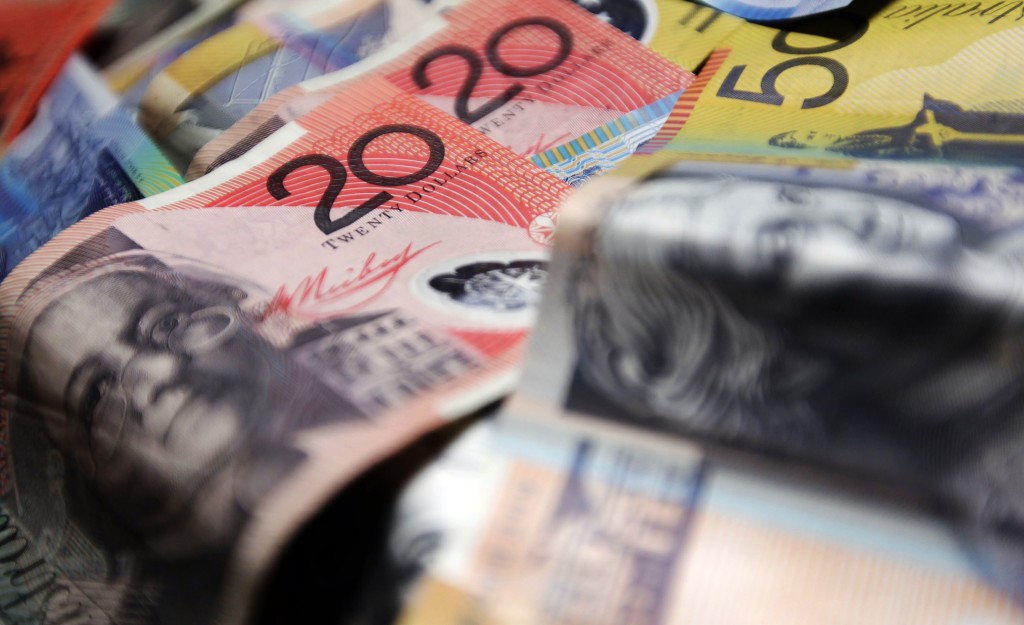Inflationary expectations in Australia decrease for June, but this morning’s attention was solely on the employment report for May. The headline figure came in strong on the back of part-time job creation while full-time positions posted a small increase. The unemployment rate remained unchanged at 5.2%, but the labor force participation rate increased. The Australian Dollar accelerated to the downside and back into strong support levels with technical indicators flashing extreme oversold conditions. Will bulls step in and push the Australian Dollar to the upside, inspired by a short-covering rally or will bears remain in control? Today’s fundamental analysis will take a look at the AUDJPY and determine its next move.
Here are the key factors to keep in mind today for Australian Dollar trades:
- Australian Consumer Inflation Expectations: Australian Consumer Inflation Expectations for June increased by 3.3% annualized. Forex traders can compare this to Australian Consumer Inflation Expectations for May which increased by 3.3% annualized.
- Australian Employment Report: The Australian Employment Change for May was reported at 42.3K. Economists predicted a figure of 16.0K. Forex traders can compare this to the Australian Employment Change for April which was reported at 43.1K. The Unemployment Rate for May was reported at 5.2%. Economists predicted a reading of 5.1%. Forex traders can compare this to the Unemployment Rate for April which was reported at 5.2%. 2.4K Full-Time Positions and 39.8K Part-Time Positions were created in May. Forex traders can compare this to the loss of 0.3K Full-Time Positions and to the creation of 43.4K Part-Time Positions which were reported in April. The Labor Force Participation Rate for May was reported at 66.0%. Economists predicted a reading of 65.8%. Forex traders can compare this to the Labor Force Participation Rate for April which was reported at 65.9%.
The Japanese BSI Large All Industry and BSI Large Manufacturing Index for the first-quarter slipped further into negative territory. Forex traders opted to ignore this economic data set and focused on the crucial Tertiary Industry Index for April which powered ahead at twice the expected rate. This boosted the Japanese Yen and added to bullish sentiment at the same time safe haven demand surged as trade rhetoric out of the US and China hardened. Make sure to check out the forex trading site of PaxForex and find out if the Japanese Yen can continue to rally or of a price action reversal is in the making.
Here are the key factors to keep in mind today for Japanese Yen trades:
- Japanese BSI Large All Industry Index and BSI Large Manufacturing Index: The Japanese BSI All Large Industry Index for the first-quarter was reported at -10.4 quarterly and the Japanese BSI Large Manufacturing Index was reported at -3.7. Forex traders can compare this to the Japanese BSI All Large Industry Index for the fourth-quarter which was reported at -7.3 and to the Japanese BSI Large Manufacturing Index which was reported at -1.7.
- Japanese Buying Foreign Bonds and Japanese Buying Foreign Stocks/Foreign Buying Japanese Bonds and Foreigners Buying Japanese Stocks: Japanese Buying Foreign Bonds for the period ending June 7th was reported at ¥1,736.0B and Japanese Buying Foreign Stocks was reported at ¥30.6B. Forex traders can compare this to Japanese Buying Foreign Bonds for the period ending May 31st which was reported at ¥441.7B and to Japanese Buying Foreign Stocks which was reported at ¥344.0B. Foreign Buying Japanese Bonds for the period ending June 7th was reported at ¥589.5B and Foreigners Buying Japanese Stocks was reported at -¥148.0B. Forex traders can compare this to Foreign Buying Japanese Bonds for the period ending May 31st which was reported at ¥685.8B and to Foreigners Buying Japanese Stocks which was reported at -¥285.9B.
- Japanese Tertiary Industry Index: The Japanese Tertiary Industry Index for April increased by 0.8% monthly. Economists predicted an increase of 0.4% monthly. Forex traders can compare this to the Japanese Tertiary Industry Index for March which decreased by 0.2% monthly.
Should price action for the AUDJPY remain inside the or breakout above the 74.500 to 74.950 zone the following trade set-up is recommended:
- Timeframe: D1
- Recommendation: Long Position
- Entry Level: Long Position @ 74.850
- Take Profit Zone: 77.500– 78.000
- Stop Loss Level: 74.000
Should price action for the AUDJPY breakdown below 74.500 the following trade set-up is recommended:
- Timeframe: D1
- Recommendation: Short Position
- Entry Level: Short Position @ 74.250
- Take Profit Zone: 72.400 – 73.000
- Stop Loss Level: 74.850
Open your PaxForex Trading Account now and add this currency pair to your forex portfolio. Make sure you trade with a broker where your forex investment is secure and you are provided with the tools in order to grow your balance!

